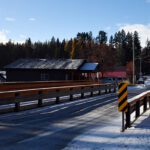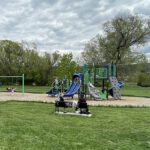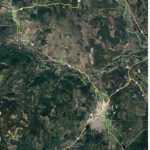Home »

Annual count seeks bat roosts and volunteers
Bat Count contributes to surveillance for white-nose syndrome across the province
It can be difficult to know how to help endangered wildlife such as the Little Brown Bat.
One simple way to support bats is to participate in the BC Annual Bat Count. The BC Community Bat Program is requesting colony reports and volunteer assistance for this citizen-science initiative that encourages residents to count bats at local roost sites.
 In 2018, the Annual Bat Count collected baseline data on bat populations at 214 sites across the province, and hope to find more sites for 2019 (pictured above).
In 2018, the Annual Bat Count collected baseline data on bat populations at 214 sites across the province, and hope to find more sites for 2019 (pictured above).
The count data helps bat biologists understand bat distribution and normal variation in colony sizes before the devastating White-nose Syndrome affects bats in the province.
White-nose syndrome is an introduced fungal disease, fatal for bats but not for other animals or humans. Not yet identified in B.C., the disease continues to spread in Washington State, less than 200 km from our border. Results from the Bat Count may help prioritize areas in B.C. for research into treatment options and recovery actions.
Bat counts are easy and fun. “The counts are a wonderful way for people to get involved in collecting important scientific information, as well as learn about bat behaviour,” said biologist Leigh Anne Isaac, coordinator of the Kootenay Community Bat Program.

Volunteers wait outside a known roost site, such as a bat-house, barn, bridge or attic, and count bats as they fly out at twilight. They record the final number along with basic information on weather conditions. Ideally, one to two counts are done between June 1 and 21 before pups are born, and one to two more between July 11 and August 5 when pups are flying.
“We know relatively little about bats in B.C., including basic information on population numbers” continued Isaac. “This information is more valuable than ever, particularly if it is collected annually. If people want to get involved but don’t have a roost site on their property, we will try to match them with a roost site nearby.”
Funded by Columbia Basin Trust, Regional Districts of East Kootenay and Central Kootenay, Habitat Conservation Trust Foundation, the Forest Enhancement Society of BC, the Habitat Stewardship Program, and with support of the BC Conservation Foundation and the Province of B.C., the BC Community Bat Program provides information for people dealing with bat issues on their property or who have questions about how to attract bats.
To find out more about bat counts or white-nose syndrome, to report a dead bat, or to get assistance dealing with bat issues, visit www.bcbats.ca or call 1-855-9BC-BATS x. 14.
Lead image: Bat emerge form a roost site at dusk. Photo: Sunshine Coast Wildlife Project







